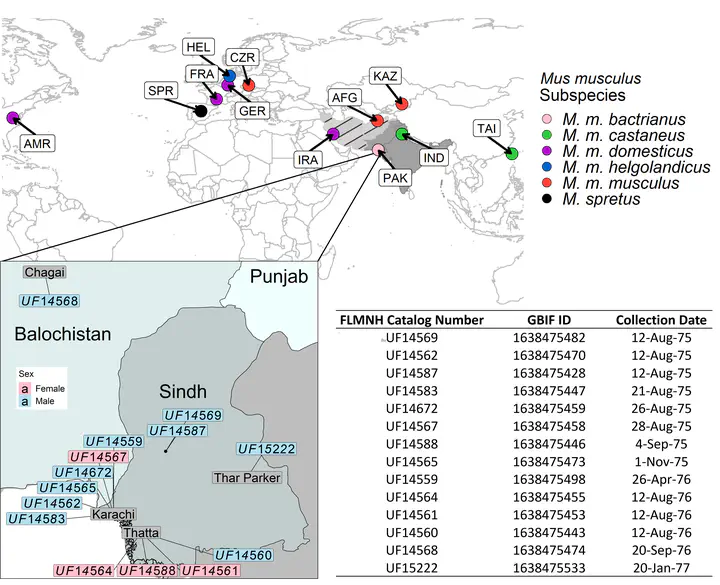Taxonomic assessment of two wild house mouse subspecies using whole-genome sequencing

Abstract
The house mouse species complex (Mus musculus) is comprised of three primary subspecies. A large number of secondary subspecies have also been suggested on the basis of divergent morphology and molecular variation at limited numbers of markers. While the phylogenetic relationships among the primary M. musculus subspecies are well-defined, relationships among secondary subspecies and between secondary and primary subspecies remain less clear. Here, we integrate de novo genome sequencing of museum-stored specimens of house mice from one secondary subspecies (M. m. bactrianus) and publicly available genome sequences of house mice previously characterized as M. m. helgolandicus, with whole genome sequences from diverse representatives of the three primary house mouse subspecies. We show that mice assigned to the secondary M. m. bactrianus and M. m. helgolandicus subspecies are not genetically differentiated from M. m. castaneus and M. m. domesticus, respectively. Overall, our work suggests that the M. m. bactrianus and M. m. helgolandicus subspecies are not well-justified taxonomic entities, emphasizing the importance of leveraging whole-genome sequence data to inform subspecies designations. Additionally, our investigation provides tailored experimental procedures for generating whole genome sequences from air-dried mouse skins, along with key genomic resources to inform future genomic studies of wild mouse diversity.